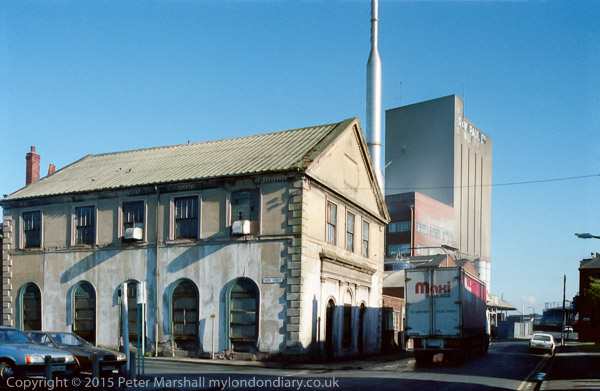
Scott St Chapel, a Weslyan Methodist chapel built in 1804 and probably the first in the area. It became home to printers Mason & Jackson around 1910 until they ceased trading in 1997. Attempts to list it failed, and it was demolished in 2001.
As I’ve mentioned here several times before, 1985 was the year I finally was able to give up transparency film and move in my colour work to using colour negative. Since then I only used slide film on a very few occasions, mainly for copy work to make slides for teaching before we got digital projectors and film scanners. Perhaps a job or two where a client insisted on it – but I didn’t often work for clients, as until the film scanner came around I was still working full-time in education. But most of the work in those days that went into libraries and agencies was black and white prints, and most publications were black and white too. Things have changed completely in the past 20 years or so.
I did have a little colour work with one agency, but sales were poor. I don’t think I even recovered the cost of making the medium-format transparencies they demanded, which were actually photographs of 15×10″ exhibition quality prints, the originals of which were taken on 35mm colour negative film.
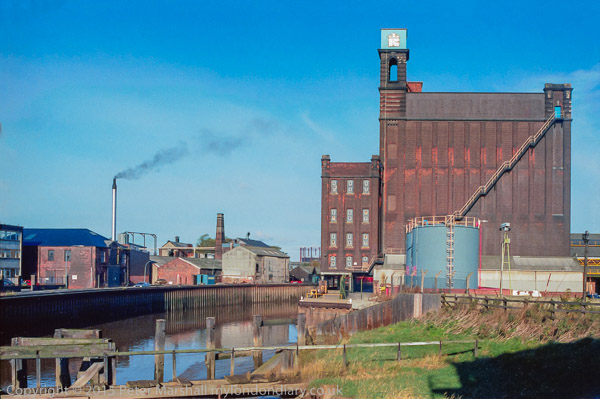
The River Hull
My switch to colour neg wasn’t really just a technical matter, but also reflected a change in direction of my photography, analogous to one that I had already taken around 8 years earlier in my black and white. There the emphasis had altered from being interested in picture-making and form – shape, line, light, composition to one on using these elements to say something about the real world, from form to content. With colour, transparency film had not been a problem when my pictures were largely about light and colour – and indeed its exaggerations had contributed to the images, but became a source of frustration when my concern became the subject.
I had decided that my photography was no longer about photography, about creating images, but about making images that said something – I had become a documentary photographer. I wasn’t throwing shape, line, colour, light, composition out of the window, but recognising them as simply means rather than the end.
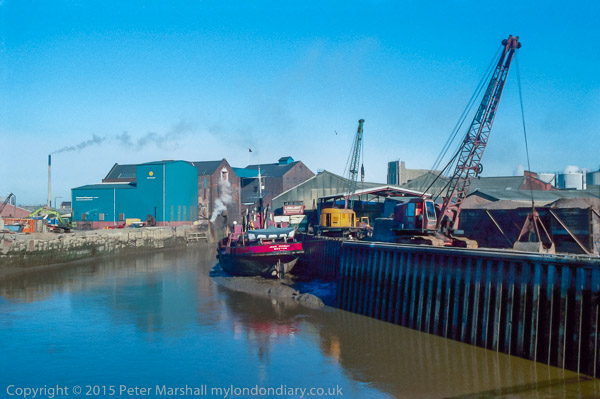
The River Hull
I took only a couple of colour neg films in 1985, during the October half-term when I was continuing the project I had started a few years earlier on the city of Hull and shown there in 1983. A few of the pictures were of places I’d earlier photographed on slide. Later I would develop separate projects to work on in colour and black and white, though usually ones that I could easily work on together.
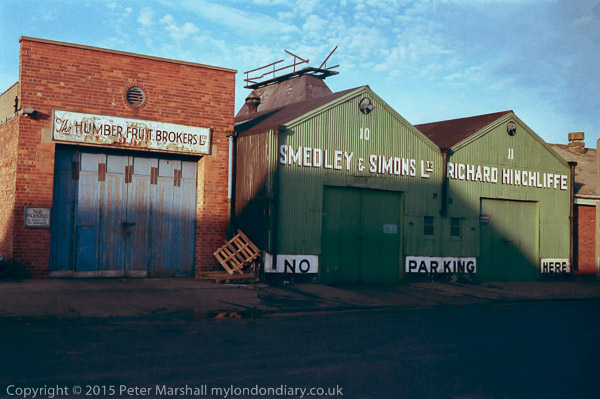
A smoking shed in the Old Town – with details visible in the shadow area
I didn’t take any great pictures on those first two rolls, but the differences were enough to know I was on the right track. Working in low winter sun I could now see detail in shadows and was less likely to lose highlight detail. Another advantage was the ability to easily see to the edge of the frame without having to demount a slide. The OM viewfinders showed about 95% of the frame – very close to the edge, and slide mounts usually had a 22x34mm aperture, showing only around 87% of the image – and more was often lost by the printers.
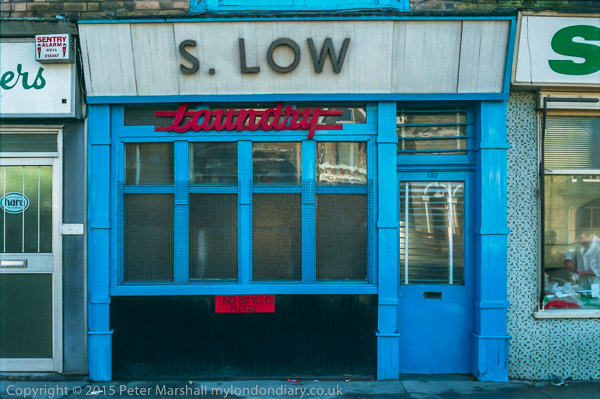
S Low, laundry. Spring Bank – negative
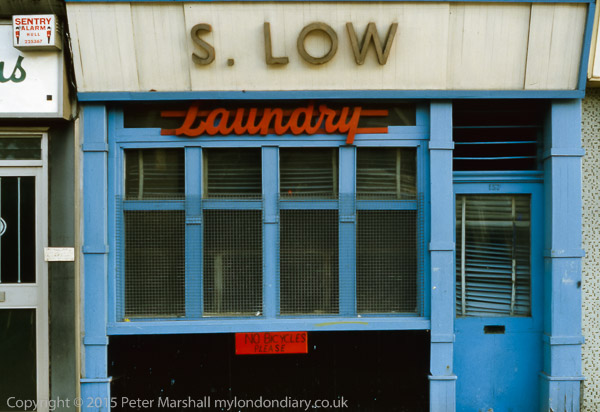
S Low, laundry. Spring Bank – transparency
This was one of my favourite shop fronts on Spring Bank, partly because of the name – and I think it was a Chinese Laundry. It is still basically there on Street View but no longer a business, with no name and no Laundry sign and the street numbering has changed. Gone to is the very Hull touch ‘No Bicycles please’ and the Sentry Alarm with its Hull phone number. I’m not sure which is the truer colour (and I’ve only done a fairly rough balance on these images), but they have similar sharpness, and as a bonus the negative version has a fishmonger handling fish seen through the shop window at the right. I hvent gone too find the slide and checked, but I suspect it would show I had carefully framed the bottom of the shop at the bottom edge of the image, and it has been cut off by the slide mount in which this images was scanned.
I had a lot to learn, not least how to make my own colour prints. It took me a while, and eventually I had to buy a roller processor for my darkroom. Things became so much easier when we could print digitally.